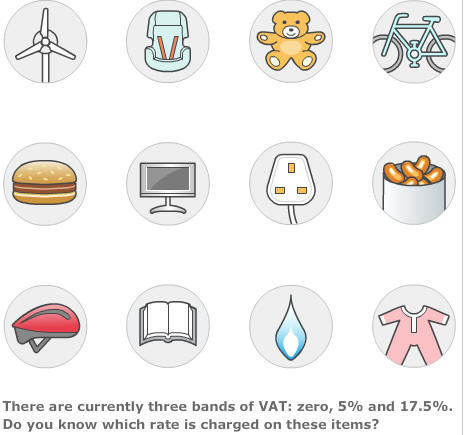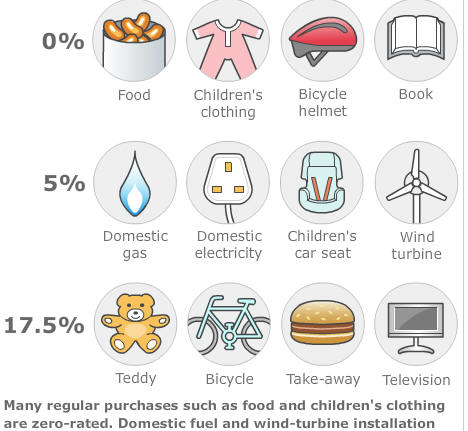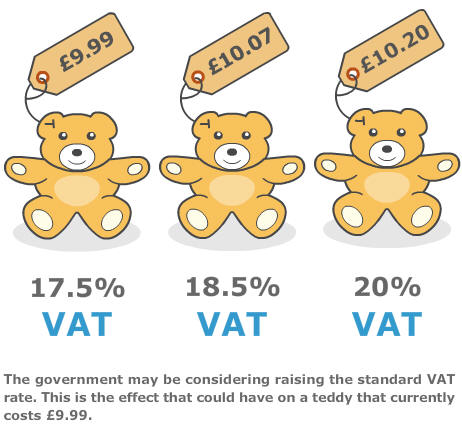


The current standard rate of VAT is 17.5%, which is one
of the lowest rates in Europe.
|
Country |
VAT % |
Country |
VAT % |
Country |
VAT % |
|
Source: European Commission |
|
Austria |
20 |
Germany |
19 |
Netherlands |
19 |
|
Belgium |
21 |
Greece |
23 |
Poland |
22 |
|
Bulgaria |
20 |
Hungary |
25 |
Portugal |
20 |
|
Cyprus |
15 |
Ireland |
21 |
Romania |
19 |
|
Czech Republic |
20 |
Italy |
20 |
Slovakia |
19 |
|
Denmark |
25 |
Latvia |
21 |
Slovenia |
20 |
|
Estonia |
20 |
Lithuania |
21 |
Spain |
16 |
|
Finland |
22 |
Luxembourg |
15 |
Sweden |
25 |
|
France |
19.6 |
Malta |
18 |
UK |
17.5 |
It has been suggested that increasing VAT would be a
good way for the coalition government to raise some of
the extra cash it needs to reduce the amount it has to
borrow.
If the government were to raise the rate of VAT from
17.5% to 18.5% it would raise about £4.65bn.
Because many necessities are zero-rated for VAT, the
government could argue that the increased tax would not
harm the most vulnerable people in society.
|
|
17.5% |
18.5% |
20% |
|
Cuddly toy |
£9.99 |
£10.07 |
£10.20 |
|
Flat-screen television |
£500.00 |
£504.25 |
£510.64 |
|
New car |
£15,000.00 |
£15,127.66 |
£15,319.15 |
But the government could decide that desperate times
call for desperate measures and begin to charge VAT on
items that have previously been zero-rated.
Last year, £71.5bn was spent on food in the UK,
according to the Office for National Statistics.
So, if the government were to start charging VAT on
food, it would make about £700m for every 1% it charged.
If the government felt really brave and decided to
charge the full 17.5% VAT rate on clothes and shoes for
small children it could raise about £1bn a year,
according to HMRC.
Alternatively, it could charge full VAT on newspapers,
books and magazines and raise £1.3bn.
Of course, all of these figures for VAT ignore the
possibility that higher prices would mean people would
buy fewer of the more expensive items.